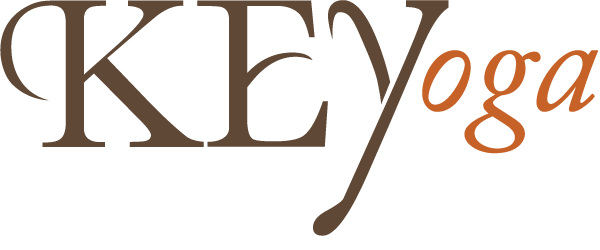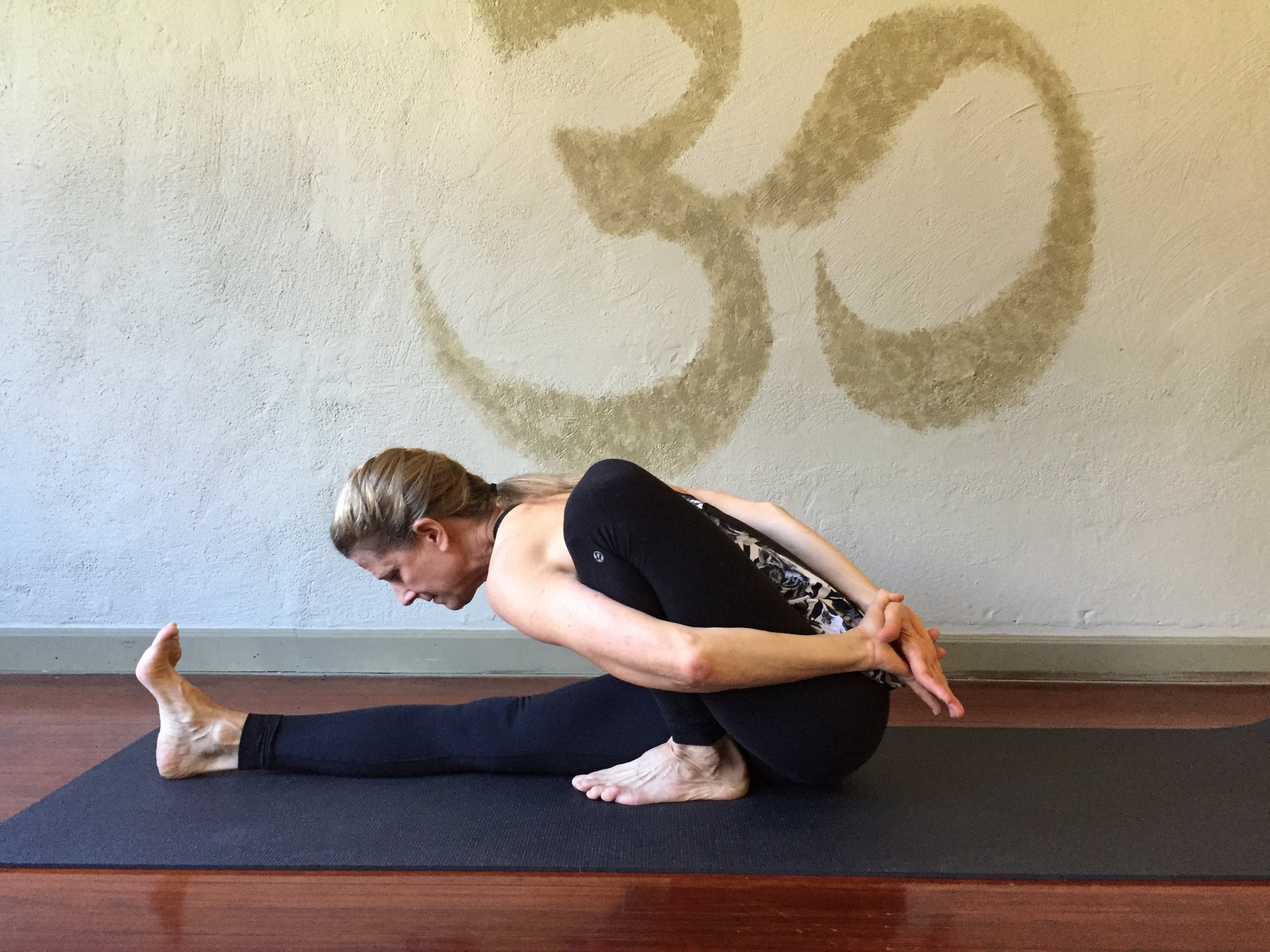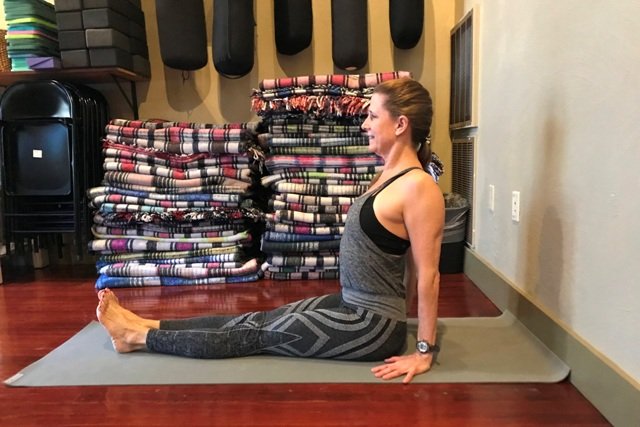Marichyasana I is a seated forward bend with a bind.
Let’s look at the shape of the pose and see what the constituents of this pose are. When you look at the straight leg, can you see the Dandasana shape? Dandasana is the basis for all of the seated forward bends. The torso is extended over the straight leg, as in Paschimottanasana (Intense Stretch of the West Pose, or Seated Forward Bend) in it.
Now, let’s take a look at the bent leg. It has the shape of Malasana (Garland Pose) in it. Not the wide legs of Goddess, but the legs together. Malasana is deep squat, but it is called Garland Pose because the arms get entwined around the legs like a garland or mala. First you learn to stretch the arms forward and get the head down before you learn to bind.
The arms come from Malasana, but before you learn to entwine the arms around the legs like that, you first learn to extend the arms behind your back in Setu Bandha Sarvangasana (supported bridge pose), Salamba Sarvangasana ((Shoulder Stand) and even in Paschima Namaskarasana (Hands behind the back in prayer).
One sequence I might use to work towards this pose in class this week might be:
Parsvottanasana, hands down, concave to convex
Prasarita Padottanasana I, concave to convex
Hasta Mudra (arm work - to get the hands behind the back in Paschima Namaskarasana
Parsvottanasana, classis pose (hands in Paschima Namaskar)
Prasarita Padottanasana II, classic asana (hands in Paschima Namaskar)
Sirsasana I
Paschimottanasana
Malasana
Marichyasana I
Salamba Sarvangasana







